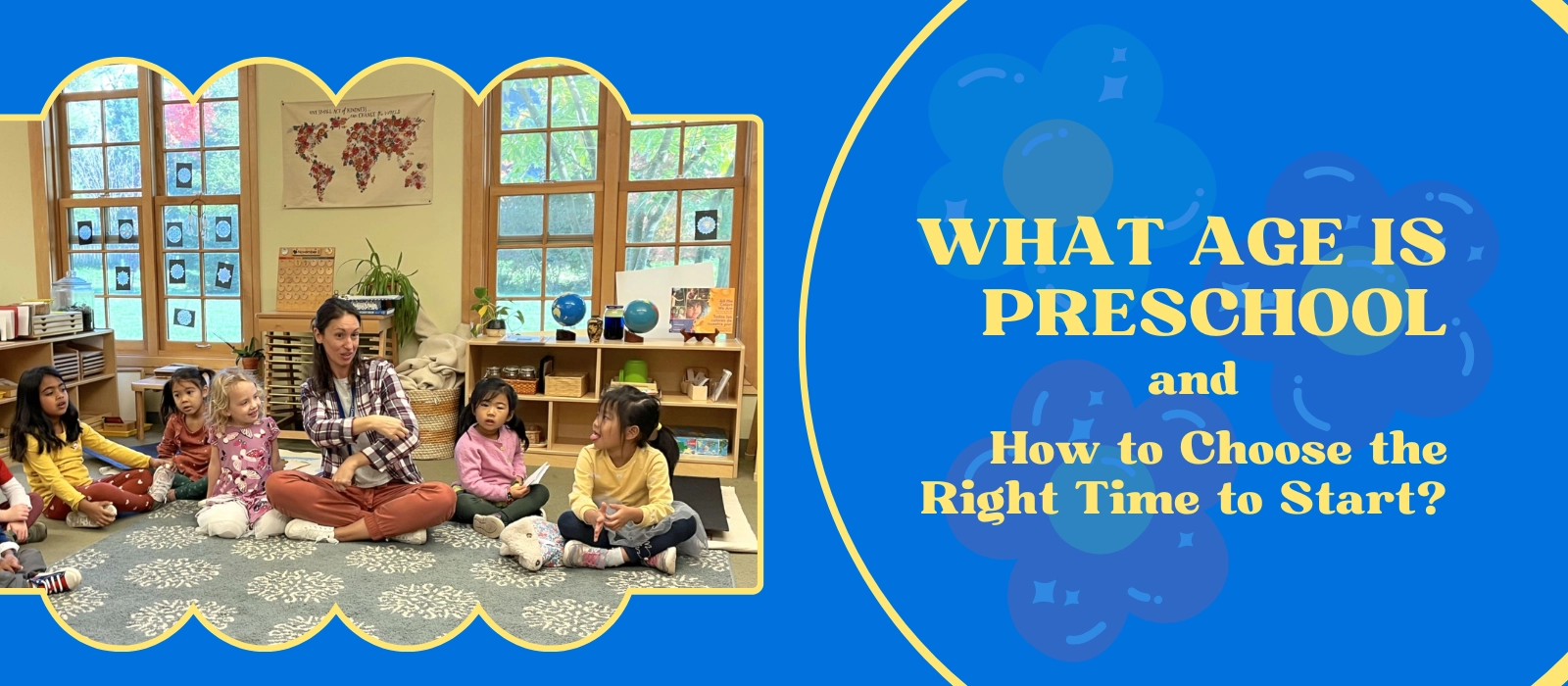Is your child too young or already behind for preschool? Should you enroll them at 2, 3, or wait until 4? What if they’re not potty trained yet? These questions trouble millions of parents and preschool directors every year—especially when school timelines and development speeds don’t always align.
Preschool typically starts between ages 2 and 5, but the ideal age varies by child. Starting at the right time helps boost language skills, social-emotional growth, and learning readiness. Enrolling too early or too late can affect both confidence and classroom performance, which is why choosing the right age for preschool is crucial.
Choosing when to send a child to preschool is more than just picking a date—it’s about knowing when they’re developmentally ready and what kind of environment will help them thrive.
1. What Age Is Preschool and Why It Matters
When we talk about what age is preschool, the answer seems simple—but it’s more nuanced than most parents and educators realize. Technically, preschool is for children between the ages of 2 to 5, but the readiness of each child is unique. In some systems, preschool begins at age 2 or 2.5; in others, age 3 is the standard starting point. Many kindergartens expect children to have attended some form of preschool before they start formal education at age 5 or 6.

Preschool is designed to bridge the developmental gap between infancy and formal schooling. Children during this phase develop critical skills such as:
- Social interaction with peers and adults outside the family
- Emotional regulation, learning patience, empathy, and cooperation
- Language development, both expressive and receptive
- Basic numeracy and literacy foundations, such as recognizing letters, numbers, and patterns
Missing or delaying entry into preschool can lead to difficulties in kindergarten adjustment. On the flip side, starting too early can backfire if the child isn’t emotionally or cognitively ready. That’s why understanding what age is considered preschool is vital—not just from a calendar standpoint, but from a developmental perspective.
Parents and preschool providers should also take note that what age is considered a preschooler isn’t rigid. Developmental milestones vary widely. Two children of the same age may have drastically different abilities to sit still, follow instructions, or engage in group play.
In the context of educational policy, different countries define what is preschool age differently. For example:
- In the United States, preschool typically includes ages 3–5, with Pre-K targeting 4-year-olds.
- In China, many children begin nursery or lower kindergarten at age 2.5–3.
- In Europe, especially countries like Finland or Sweden, play-based preschool starts around age 3 and may continue until age 6.
The key takeaway here is that while the preschool age range may look similar on paper, the true indicator of readiness lies in your child’s behaviors, emotional maturity, and social habits.
Understanding the significance of what age is preschool will help both parents and educators prepare children for a smoother academic and social journey. In the next section, we’ll explore how to tell whether your child is truly ready to start preschool—or whether it might be worth waiting a bit longer.
2. Signs Your Child Is Ready for Preschool
One of the most common questions I hear from parents and kindergarten directors is: “How do I know if a child is ready for preschool?” While age is a useful guideline, behavioral and developmental signs often give us a more accurate answer. After all, a child may be 3 years old chronologically but still exhibit emotional patterns closer to a toddler.

Here are some of the clearest signs that your child may be ready for preschool:
1. Basic Independence
- Can your child separate from you without excessive distress?
- Are they potty trained or at least in the process?
- Do they understand basic routines like putting on shoes or feeding themselves?
2. Language Development
- Does your child use words to express needs, feelings, or desires?
- Can they understand and follow simple instructions?
3. Social Readiness
- Do they enjoy playing near or with other children?
- Are they curious about group activities like singing, painting, or storytime?
4. Focus and Attention Span
- Can they concentrate on a single task for more than a few minutes?
- Are they capable of listening to an adult speak or read aloud?
5. Emotional Regulation
- Does your child show signs of self-control such as waiting their turn or expressing frustration with words?
Each child develops at their own pace, and not all children need to check every single box. However, these readiness markers help determine if your child is equipped to handle the structured-yet-playful preschool environment.
External source: CDC’s Developmental Milestones for Ages 2-5
Preschool educators often use similar checklists to guide parent consultations. It’s worth having a professional assessment if you’re unsure. These signs not only indicate readiness for preschool but also correlate with long-term academic success.
In the next section, we’ll provide a practical checklist of questions every parent should ask themselves before enrolling their child in preschool.
3. Questions to Ask Before Sending Your Child to Preschool
Asking the right questions can help you decide whether preschool is the right step for your child right now. Here’s a quick guide to help you reflect before making the decision:
1. Is My Child Comfortable Being Away from Me?
If your child struggles with separation anxiety, you may need to slowly transition into preschool with shorter days or more preparatory socialization.
2. Can My Child Follow Simple Instructions?
Preschools operate around routines. If your child can follow basic instructions like “line up,” “put away your toys,” or “sit for a story,” they’re more likely to adapt smoothly.
3. Is My Child Potty Trained or on the Way?
Some preschools require full potty training, while others assist with it. Be clear about your child’s stage and the preschool’s expectations.
4. How Does My Child React in Group Settings?
Does your child enjoy being around others, or do they get overwhelmed easily? Observing them in group playdates or daycare settings can offer insight.
5. Is My Child Curious and Ready to Learn Through Play?
Preschool is about discovery and play-based learning. A child who enjoys picture books, pretend play, or exploring new things will thrive in a preschool environment.
These reflection points can also be used during teacher-parent consultations to align expectations and clarify readiness.
In the next section, we’ll look at how different countries define the age for preschool and kindergarten, and why these distinctions matter for international programs and global procurement.
4. Global Perspectives on Preschool Age
While parents often search for answers about what age is preschool, it’s important to understand that the answer depends heavily on where you live. Different countries and educational systems have their own definitions of preschool, both in terms of age range and the structure of early childhood education.
North America (U.S. and Canada)
In the United States, preschool usually refers to educational settings for children aged 3 to 5. Pre-K is often designed for 4-year-olds, while 5-year-olds typically begin kindergarten. Some states offer public preschool programs, while others rely on private institutions or community-based providers.
Canada has a slightly more decentralized system, with the starting age for preschool varying by province. However, most Canadian preschools accept children from age 2.5 to 4, preparing them for kindergarten at age 5 or 6.
Europe
European countries tend to emphasize play-based learning and social development. For instance:
- Finland starts early education (“varhaiskasvatus”) as early as age 1, but structured preschool learning begins around age 3.
- Germany has “Kindergarten” from ages 3 to 6, which is considered preschool and not yet formal schooling.
- United Kingdom provides nursery school for ages 3–4, with reception class (the first year of primary school) starting at age 4 or 5.
Australia
In Australia, preschool (or “kindy”) is typically offered to children aged 3 to 5. Attendance is not compulsory, but widely encouraged. Some territories offer government-subsidized preschool programs to increase accessibility and participation.
Asia
In China, children often begin “nursery school” around age 2.5, followed by kindergarten from ages 3 to 6. Preschool education is highly valued and often seen as a preparatory phase for the competitive primary school system.
Japan also starts preschool around age 3, offering both public and private options. Emphasis is placed on group behavior, routine, and foundational learning.
Why This Matters for International Procurement
If you’re running or sourcing for a preschool across borders, these age definitions impact everything—from curriculum to furniture specifications. For example, a preschool chair suitable for a 2-year-old in China may not be used in a Canadian Pre-K setting designed for 4-year-olds.
Understanding these regional differences allows better alignment when choosing age-appropriate furniture, designing classrooms, and complying with local or international safety standards.
Next, let’s examine how preschool readiness ties into product design and how XIHA Furniture ensures our products meet the diverse needs of preschool-aged children worldwide.
5. How Preschool Age Affects Furniture and Learning Space Design
Once we understand what age is preschool, the next natural step is considering how those ages influence the physical environment—especially furniture and classroom design. The right age-appropriate furniture supports children’s safety, comfort, and learning outcomes.

Why Age-Specific Design Matters
Preschool-aged children grow rapidly between ages 2 and 5. A 2-year-old may only reach 85 cm in height, while a 5-year-old may be closer to 110 cm. This affects everything from chair and table height to shelf accessibility and toy safety. If furniture is too high or too low, it can hinder a child’s independence, posture, and engagement.
In preschool settings, poorly chosen furniture can lead to:
- Physical discomfort or fatigue
- Posture and spinal issues
- Higher risk of injury or tipping
- Disruption in concentration and engagement
Conversely, well-designed, age-matched furniture helps children:
- Develop proper posture
- Engage in focused play and learning
- Access materials independently
- Move safely around the classroom
How XIHA Furniture Aligns with Preschool Age Ranges
At XIHA Furniture, we design every product based on deep research into developmental psychology and international ergonomic standards. Each product line is tailored to specific preschool age brackets:
- 2–3 years old: Rounded-edge, low-height chairs (seat height ~20–22 cm), anti-slip legs, stable wide bases, BPA-free plastics, and soft pastel colors to minimize visual overstimulation.
- 3–4 years old: Moderate-height tables and chairs with slightly more structure for basic group learning; stackable furniture to optimize flexible classroom layouts.
- 4–5 years old: Ergonomic wood-and-metal combinations to simulate formal school environments, with designs that still prioritize safety and imaginative interaction.
We follow global standards such as:
- EN 1729 (European furniture dimensions)
- ASTM F2613-21 (U.S. safety standard for children’s furniture)
- GB 28007-2011 (China national safety standard for school furniture)
Read more: Why Ergonomics Matters in Early Learning Environments
Furniture and Curriculum Go Hand in Hand
The choice of furniture should also align with curriculum goals. For play-based environments, flexible layouts and open shelving promote exploration. For language-rich settings, group tables and reading corners matter more. When you know what age is preschool age, you’re better equipped to make smart purchasing decisions.
At XIHA Furniture, we serve kindergartens across North America, Europe, and Asia. Our international clients often face the challenge of buying for multiple age brackets under one roof. That’s why we provide modular designs, adjustable-height options, and age-specific packages.
In the next section, we’ll wrap up with practical tips for aligning readiness, age, and educational goals—with XIHA Furniture as your trusted supplier.
6. Readiness Indicators for Preschool Enrollment
Understanding at what age is preschool also means recognizing how it serves as a vital bridge between early childhood and formal schooling. Enrolling in preschool isn’t just about learning the ABCs—it’s about preparing children socially, emotionally, and cognitively for the more structured environment of kindergarten.
Preschool Builds the Foundation for Kindergarten Success
Research shows that children who attend preschool are more likely to succeed in kindergarten and beyond. Through group activities, circle time, story sessions, and structured play, preschoolers build skills in:
- Collaboration and sharing
- Following directions and classroom routines
- Basic numeracy and literacy
- Self-regulation and independence
These are essential for thriving in a kindergarten setting where expectations are higher and support is less individualized.
National Institute for Early Education Research – Preschool Outcomes
Preschool Age and the Right Learning Environment
Since the preschool age range includes children from 2 to 5 years old, the learning environment must evolve with their needs. For younger children (ages 2–3), the emphasis should be on sensory play and safe, soft furniture. By age 4 or 5, children benefit from semi-structured activities and group projects that simulate the expectations of a kindergarten classroom.
This is why knowing what age is preschool age directly impacts how classrooms are furnished, how the curriculum is framed, and how staff are trained to support developmental transitions.
Age-Appropriate Furniture Supports School Readiness
Age-specific classroom furniture helps children build independence, confidence, and focus. Chairs and tables that are too big can cause discomfort, reduce attention span, or even lead to safety concerns. On the other hand, ergonomically appropriate furniture:
- Encourages independent access to learning tools
- Supports proper posture and attention
- Helps create inviting reading, art, and group work zones
With the right environment, children are not only prepared to enter kindergarten with confidence—they’re also set up for a lifetime of learning.
Now that we’ve explored age readiness, global practices, and how learning spaces support early development, let’s conclude with a practical summary.
Conclusion
Understanding what age is preschool isn’t just a matter of dates on a calendar—it’s a cornerstone of your child’s developmental path. From ages 2 to 5, children grow emotionally, socially, and cognitively in ways that set the stage for lifelong learning. Whether your child starts preschool at 2.5 or closer to 4, the key is readiness, not just age. By evaluating their independence, language skills, and social comfort, parents and educators can make informed decisions about enrollment.
Globally, preschool age varies—but the universal truth is that high-quality, age-appropriate preschool experiences help children thrive. With the right learning environment, structured routines, and supportive furniture, children enter kindergarten not only prepared but excited to learn.
At XIHA Furniture, we understand how crucial this stage is. That’s why we specialize in providing safe, ergonomic, and developmentally appropriate furniture designed for every stage of the preschool journey. As a trusted supplier to kindergartens worldwide, we help create spaces where children grow, explore, and succeed.



